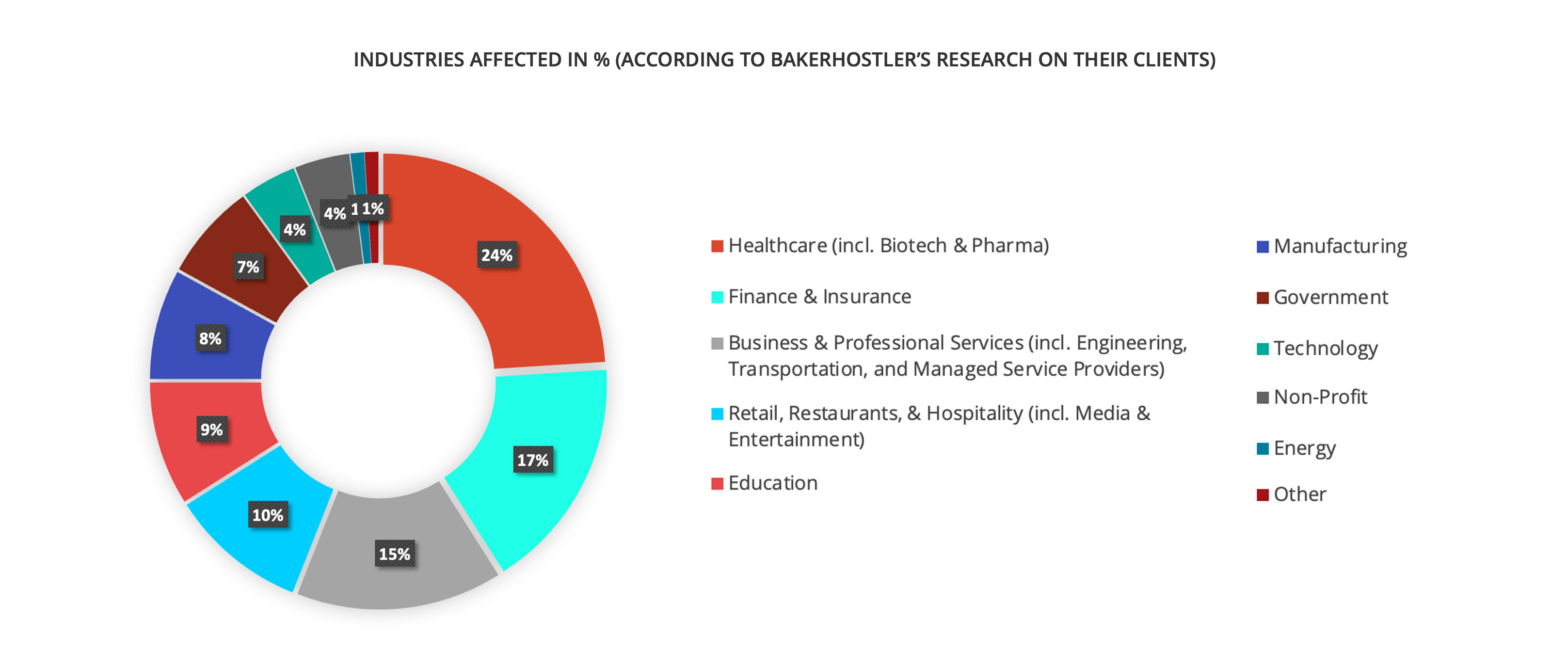The data storage system is a complex infrastructure that needs to be looked after by every company that operates on data. Just as a car engine needs oiling, and checking blocks, pistons, cylinders, valves, or spark plugs, every organization should meticulously plan and test Business Continuity and Disaster Recovery plans and procedures. This is a part of Business Resilience – a basis to prepare for possible disasters and avoid downtime.
In simple words, Business Resilience is maintaining continuous business operations, protecting people and assets, and preserving brand equity in the face of disruptions. Without this, you won’t be able to provide the best possible data storage protection and avoid downtime. Each company should be prepared for any risks or anything wrong that may happen to your data storage system. Both on software and hardware levels.
Let’s look at the statistics for 2023:
- Average ransom demands and payments between 2018 and 2022:

- Industries affected in % (according to BakerHostler’s research on their clients)

Data provided according to BakerHostetler report you can find here.
As you can see, broad and fast modernization in the data storage market won’t prevent us from disasters at 100%, unfortunately.
- Sometimes, it’s the force of nature we can’t prevail.
- Hackers have increasingly clever ways to bypass security methods.
- Even the best hardware will eventually cease to function.
- A company needs to make sure that particular employees are trained and know what to do once they face a data storage crash or corruption.
Business Resilience in the Nutshell – The List
Here are some helpful hints from Open-E’s experts advising what you need to make sure of and what to avoid to provide the best possible business resilience:
1. Maintain Run Cyclic Backup Testing
It’s extremely important that snapshots are taken and retention plans are valid. Backup testing is a vital step to verify that your backup data is accurate, complete, and recoverable. You should run backup tests regularly, such as weekly, monthly, or quarterly, depending on the frequency and volume of your data changes. You should also check that your snapshots are taken at appropriate intervals and that your retention plans are aligned with your business needs and compliance regulations.
2. Maintain Spare Hardware Available and On-site
Spare computing hardware like disks, CPUs, NICs, etc., and electricity hardware that runs your whole infrastructure is crucial. Spare hardware is a valuable resource that can help you fix your system quickly in case of hardware failure or damage. You should maintain spare hardware available and on-site by keeping an inventory of all the hardware components you use, ordering replacements as soon as possible when something breaks or wears out, and storing them securely and conveniently near your system location.
3. Monitor Your System
Make sure that your early warning system works flawlessly with the right configuration, regular updates, and frequent tests. You should also pay attention to the alerts and notifications early warning systems (like CHECK_MK or others) send you and to take action accordingly. You’d be surprised how many issues can be avoided if noticed by their symptoms.
4. Prevent Human Errors with Training
Train your employees and check their knowledge periodically to avoid human errors. Human errors are still one of the most common causes of data loss and system failure. You should provide regular training sessions and workshops for your employees to educate them on the best practices and standards for data security and disaster recovery. You should also test their knowledge and skills through quizzes, simulations, or audits to ensure they are competent and confident in their roles.
5. Assign Roles for Disaster Recovery
Make sure that everyone knows their responsibilities when dealing with a disaster. Clear communication and coordination are vital for a successful disaster recovery. You should assign specific tasks and roles to each employee and make sure they understand what they need to do and who they need to report to in case of a disaster. You should also have a backup plan in case someone is unable to perform their duties.
6. Ensure Employees’ Availability
Make sure that everyone who is involved in the disaster recovery tasks has his/her substitute. This will prevent any delays or gaps in the recovery process if someone leaves the company or is unavailable for any reason. You should also update the contact information and roles of the employees and their substitutes regularly. One of the worst things that can happen is that the electrician, developer, or administrator is not present, and their duties cannot be fulfilled to overcome the crisis.
7. Perform Safety Drills
Keep everyone up to date with relevant procedures in case of hardware failure or natural disasters. Safety drills are essential to test the readiness and effectiveness of your disaster recovery plan and to train your employees on how to respond to different scenarios. These may be, e.g., a fire or flood that affects your server room leading to downtime. You should conduct safety drills at least once a year or more frequently, depending on the level of risk and complexity of your data storage system. You should also evaluate the results of the drills and make improvements as needed.
8. Keep Vendor Contracts List Updated
Make sure that subcontractors are still contracted to help in the case of a disaster. Vendors and subcontractors are essential partners in your disaster recovery plan. You should maintain a list of all the vendors and subcontractors that provide services or products related to your system, such as hardware, software, cloud, backup, or recovery solutions. Remember to review their contracts regularly and make sure they are still valid and meet your requirements. You should also communicate with them frequently and inform them of any changes or issues in your system.
9. Keep the Alternative Contact Method List Updated
Make sure that key contacts have an alternative contact method. You don’t want to experience downtime because somebody’s mobile phone is dead. Having reliable and accessible communication channels is crucial for a smooth disaster recovery. You should ensure that all the key contacts have at least two ways of contacting each other, such as an alternative phone number, email, or chat.
10. Look Ahead
Anticipate and prepare for potential threats and risks that could affect the organization’s performance and reputation. These are, e.g., natural disasters, cyberattacks, pandemics, geopolitical conflicts, etc. This involves conducting scenario planning, risk assessments, and contingency planning to identify and mitigate vulnerabilities.
11. Learn from Accidents and Mistakes
Respond and recover quickly and effectively from any disruption or crisis that may occur. This includes activating crisis management teams, implementing incident response plans, communicating with stakeholders, restoring critical functions of the production server, and learning from unfortunate experiences. They need to be sure that the data you store are in good and safe hands and they’re up to date once anything wrong happens.
12. Learn to Innovate
Adapt and thrive in new circumstances and opportunities that may arise from the disruption or crisis. This involves leveraging the organization’s strengths, capabilities, and culture to innovate, transform, and learn from unfortunate events. Grow in the face of changes in the data storage market as well. Data storage is rapidly changing. Recent years show that involving AI to analyze various types of data can bring great results, no matter if your main goal is to store, archive, or process dynamic read/write operations (e.g., in a financial segment).
13. Be Proactive!
Most basic, but still most important! Don’t leave anything for later.
Later most often means too late!
Being proactive means anticipating and preparing for the future needs and challenges of the data storage market. It includes developing and implementing innovative solutions that meet the demand for data storage, enhance the performance and efficiency of data storage systems, and provide the security and reliability of your data storage services.
You know your clients and system, so you know best what being proactive means for your company.
For Your Own Good and Safety
These hints from our experts will help you provide the maximum business resilience. If you combine it with our excellent solutions – the On- & Off-site Data Protection and the High Availability Cluster, you can be sure that you are ready for any possible inconvenience. Nothing will stop you from providing the best services, business continuity, and enjoying a reputation as a reliable and dependable company, which is a pleasure to work with as a long-term partner in business.




